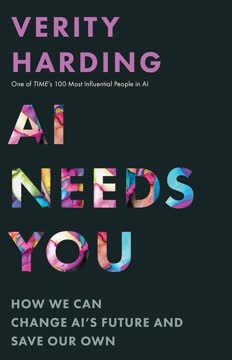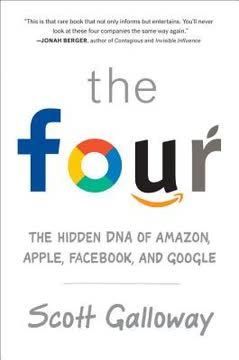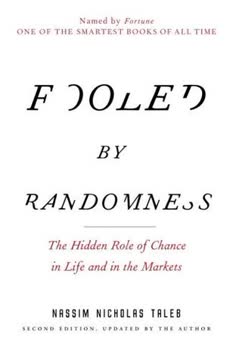Key Takeaways
1. Financialization has transformed the global economy, often to its detriment
The notion that finance was special was uncontroversial, and the inability of many intelligent people outside finance to understand quite what financiers did only reinforced that perception.
Financialization defined. Financialization refers to the process by which financial services, markets, and institutions have come to dominate the global economy over the past few decades. This transformation has been characterized by:
- The explosive growth of the financial sector relative to the rest of the economy
- The increasing complexity and interconnectedness of financial products and institutions
- The rising influence of financial motives, markets, and elites in economic and political decision-making
Consequences. While proponents argue that financialization has increased efficiency and risk management, critics point to several negative outcomes:
- Increased economic instability and frequency of financial crises
- Growing income inequality as financial sector profits and compensation have soared
- Misallocation of resources away from productive investment and towards speculative activities
- Short-termism in corporate governance and economic policy
2. The financial sector has grown excessively large and complex
If we command our wealth, we shall be rich and free; if our wealth commands us, we are poor indeed.
Scale of growth. The financial sector's expansion has been staggering:
- In many Western economies, the assets and liabilities of banks now exceed the total annual income of everyone in the country
- The value of daily foreign exchange transactions is almost a hundred times the value of daily international trade in goods and services
- The value of outstanding derivative contracts is estimated to be three times the value of all physical assets in the world
Increasing complexity. This growth has been accompanied by mounting complexity:
- Financial products have become increasingly sophisticated and opaque
- The chains of intermediation between savers and borrowers have lengthened
- Financial institutions have become more interconnected, creating systemic risks
- Even industry insiders struggle to fully understand the system they operate within
Consequences. The sector's size and complexity have led to:
- Increased fragility of the financial system
- Higher costs of financial intermediation
- Difficulty in effective regulation and oversight
- A disconnect between finance and the real economy it's meant to serve
3. Modern finance frequently fails to serve its core purpose of efficient capital allocation
The paradox is that the expertise that was valued in the finance sector that had developed in the first decade of the twenty-first century were skills that were related not to the needs of end-users but to the process of intermediation itself.
Core functions neglected. The financial sector's primary roles should be:
- Facilitating payments and transactions
- Intermediating between savers and borrowers
- Managing household finances across lifetimes
- Helping businesses and individuals manage risk
However, much of modern finance has drifted away from these core functions, focusing instead on:
- Trading for trading's sake
- Creating complex financial products
- Regulatory arbitrage
- Extracting value through fees and intermediation
Misallocation of talent. The sector has attracted a disproportionate share of top graduates, often diverting them from more productive pursuits:
- Many highly skilled individuals spend their careers on activities that add little real economic value
- The focus on financial engineering and trading has come at the expense of understanding underlying businesses and economic fundamentals
- This brain drain has potentially significant opportunity costs for society
4. Financial innovation has created more instability, not less
The objective of reforming the finance industry should be to restore priority and respect for financial services that meet the needs of the real economy.
False promises. Financial innovation was often touted as a means to:
- Improve risk management
- Increase market efficiency
- Enhance financial stability
Reality. In practice, many financial innovations have had the opposite effect:
- Credit default swaps, meant to insure against default risk, amplified the 2008 financial crisis
- High-frequency trading has increased market volatility
- Complex securitization made risk assessment more difficult, not easier
Unintended consequences. Financial innovation has often:
- Created new, poorly understood risks
- Increased system-wide fragility through greater interconnectedness
- Enabled regulatory arbitrage, undermining effective oversight
- Facilitated the creation of bubbles and speculative excess
5. Misaligned incentives plague the financial industry
The notion that securitisation is a useful approach to the financing needs of SMEs is another illustration of the misconception that the solution to most problems is found in complex financing tools.
Short-termism. The financial industry's incentive structures often encourage short-term thinking:
- Traders and executives are rewarded for annual or quarterly performance
- This leads to excessive risk-taking and a focus on immediate profits over long-term stability
- The "I'll be gone, you'll be gone" mentality undermines responsible decision-making
Agency problems. Misaligned incentives create conflicts of interest:
- Asset managers may prioritize their own fees over client returns
- Investment banks may push unsuitable products to generate commissions
- Rating agencies paid by issuers may have incentives to provide overly optimistic ratings
Moral hazard. The expectation of government bailouts for large financial institutions creates perverse incentives:
- It encourages excessive risk-taking, as profits are privatized while losses are socialized
- It gives large institutions an unfair competitive advantage
- It undermines market discipline and effective risk management
6. Regulation has been ineffective and often counterproductive
There has not been too little regulation, but far too much. What is needed is an entirely different regulatory philosophy.
Regulatory capture. Financial regulators often become too close to the industry they oversee:
- Many regulators come from or aspire to join the financial industry
- This can lead to a sympathetic approach to industry concerns
- The revolving door between regulators and industry creates conflicts of interest
Complexity begets complexity. As the financial system has grown more complex, so has regulation:
- The Basel banking regulations have grown from 30 pages to over 600
- This complexity creates opportunities for regulatory arbitrage
- It also makes effective oversight more difficult
Unintended consequences. Well-intentioned regulations often have negative side effects:
- Capital requirements can incentivize banks to move risks off their balance sheets
- Detailed rules can create a "tick-box" mentality, undermining ethical behavior
- Regulations often lag behind financial innovation, creating regulatory gaps
7. Reform should focus on simplifying and restructuring the financial system
The appropriate objective is to reduce trading volumes to the modest levels that serve the real needs of the non-financial economy.
Structural reform. Key principles for reforming the financial system:
- Separate utility banking (payments, deposits, basic lending) from speculative activities
- Shorten and simplify chains of intermediation
- Encourage the development of focused, specialist institutions
- Reduce the interconnectedness of financial institutions
Cultural change. Reform must address the industry's culture:
- Emphasize ethical behavior and fiduciary duty
- Align incentives with long-term outcomes and client interests
- Foster a sense of social responsibility in finance professionals
Regulatory approach. A new regulatory philosophy should:
- Focus on principles rather than detailed rules
- Emphasize personal responsibility and accountability
- Encourage simplicity and transparency in financial products and institutions
- Limit public subsidies and implicit guarantees for financial institutions
Refocus on core functions. The reformed financial system should prioritize:
- Efficient capital allocation to productive investments
- Long-term stewardship of assets
- Meeting the real financial needs of businesses and households
- Contributing to overall economic stability and growth
Last updated:
FAQ
What’s Other People’s Money: The Real Business of Finance by John Kay about?
- Critical examination of finance: The book analyzes how modern finance has evolved, focusing on the rise of financialisation and its impact on the real economy and society.
- Structure and themes: Kay divides the book into sections on financialisation, the core functions of finance, and policy/reform, covering history, risk, intermediation, profits, and regulation.
- Challenging finance’s value: The narrative questions whether the financial sector’s growth has truly benefited economic welfare, highlighting the disconnect between finance and productive economic activity.
- Call for reform: Kay advocates for structural changes to the financial system, emphasizing the need for finance to serve society rather than itself.
Why should I read Other People’s Money by John Kay?
- Accessible analysis of finance: The book explains complex financial concepts like risk, leverage, and intermediation in clear, understandable terms.
- Critical perspective on value: Kay challenges the assumption that finance’s profitability equates to value creation, showing how much of it comes from appropriating wealth created elsewhere.
- Insight into financial crises: Readers gain a deeper understanding of how systemic risks and cultural issues within finance lead to crises.
- Thoughtful reform proposals: The book offers practical, principle-based recommendations for restructuring finance to better serve the real economy.
What are the key takeaways from Other People’s Money by John Kay?
- Finance is not special: Despite its complexity and high pay, finance should be judged by the same standards as other industries.
- Financialisation’s negative effects: The expansion of financial markets has often led to instability, misallocation of resources, and increased inequality.
- Regulation alone is insufficient: Structural reform is needed to address incentives, business models, and political influence in finance.
- Focus on core functions: A reformed financial sector should prioritize payments, capital allocation, personal finance management, and risk control.
How does John Kay define “financialisation” in Other People’s Money?
- Growth and dominance: Financialisation is the process by which the financial sector has grown in size, revenues, and influence, especially since the 1970s.
- Trading over relationships: It involves substituting trading and transactions for long-term relationships and stewardship in finance.
- Self-referential activity: Much of the sector’s activity is now trading with itself, prioritizing short-term profits over real economic needs.
- Driven by internal dynamics: The shift was propelled by industry changes, technology, deregulation, and ideology, not by the needs of the real economy.
What are the main functions of finance according to Other People’s Money by John Kay?
- Payments system: Facilitates income receipt and purchases, forming the backbone of economic activity.
- Capital allocation: Matches savers with borrowers, directing savings to productive uses and supporting business growth and infrastructure.
- Personal finance management: Helps individuals manage wealth over their lifetimes and across generations.
- Risk management: Provides tools for hedging against uncertainties, though many risks are still managed outside financial markets.
What is the “deposit channel” and why is it important in Other People’s Money?
- Definition and role: The deposit channel refers to retail banking functions—facilitating payments and short-term savings.
- Central to the economy: Kay argues the payment system is a critical utility, essential for economic and social activity.
- Neglected and vulnerable: Despite its importance, the deposit channel has been neglected in innovation and is threatened by excessive intra-financial trading.
- Need for protection: Kay advocates ring-fencing deposit-taking and payment functions from risky trading activities to safeguard the system.
How does John Kay describe the “investment channel” and asset management in Other People’s Money?
- Long-term wealth management: The investment channel manages long-term savings, involving both searching for new investments and stewarding existing assets.
- Shift from advice to sales: Traditional advisory roles have been replaced by transactional sales, creating conflicts of interest and eroding trust.
- Dominance of asset managers: Large firms now act as agents for other people’s money, often focusing on short-term performance rather than stewardship.
- Rise of passive investing: Passive investment has grown in response to high costs and poor active management, but Kay calls for more trust-based, long-term intermediation.
How does John Kay explain the profitability of the financial sector in Other People’s Money?
- Illusory profits: Much of finance’s reported profitability is short-term, based on leverage, mispricing, and temporary wealth (“bezzle” or “febezzle”).
- Trading culture: Profits often come from exploiting information asymmetries and predicting other traders, not from creating real economic value.
- Regulatory arbitrage: Financial firms profit by exploiting loopholes and expecting government bailouts, which encourages risky behavior.
- Unsustainable gains: Many profits are effectively borrowed from the future or appropriated from others, rather than reflecting genuine value creation.
What role does risk play in John Kay’s analysis in Other People’s Money?
- Risk as a commodity: Modern finance treats risk as something tradable, with markets supposedly allocating it efficiently.
- Critique of this view: Kay argues that many financial trades are more like wagers based on asymmetric information than genuine risk-sharing.
- Complexity and opacity: The complexity of financial products often leads to mispricing, moral hazard, and systemic risk.
- Behavioral factors: Human tendencies like optimism and illusion of control drive risky behavior, and financial models often fail to capture real-world uncertainty.
How does Other People’s Money explain the causes and consequences of the global financial crisis?
- Complexity and interdependence: The crisis stemmed from the tightly coupled, complex system of large financial conglomerates engaged in risky trading.
- Regulatory failure: Misconceived regulation, regulatory arbitrage, and capture allowed excessive risk-taking and opacity.
- Trading culture’s role: Bonus-driven, short-term trading behavior undermined prudence and increased systemic fragility.
- Flawed post-crisis structure: Government bailouts stabilized institutions but preserved a flawed system, making future crises likely without deeper reform.
What reforms does John Kay propose in Other People’s Money to improve the financial sector?
- Ring-fencing retail banking: Separate deposit-taking and payment functions from trading to protect essential services.
- Simplification and specialization: Restore focused, specialist institutions with clear links to users, reducing complexity and conflicts of interest.
- Personal responsibility: Impose strict legal and ethical obligations on those managing other people’s money, with real penalties for failure.
- Treat finance like other industries: Focus regulation on consumer protection and fraud prevention, and withdraw public subsidies and guarantees.
What are the best quotes from Other People’s Money by John Kay and what do they mean?
- “Robbing a bank’s no crime compared to owning one.” (Bertolt Brecht): Highlights the greater harm and lack of accountability in institutional wrongdoing versus individual theft.
- “Money often costs too much.” (Ralph Waldo Emerson): Reflects on the hidden costs and inefficiencies in financial intermediation and payments.
- “Investment should be like watching grass grow or paint dry.” (Paul Samuelson): Emphasizes the value of patience and long-term perspective in investing, contrasting with the action bias in modern finance.
- “All the money that circulates around the financial system is other people’s money.” (John Kay): Underlines the ethical responsibility of financial intermediaries to manage clients’ funds prudently.
- “The finance sector of modern Western economies is too large.” (John Kay): Summarizes Kay’s central thesis that finance has outgrown its useful economic role, absorbing resources without proportional societal benefit.
Review Summary
Other People's Money provides a critical analysis of the modern financial industry, arguing it has strayed from its core purpose of serving the real economy. Kay contends that financialization has led to excessive trading, complexity, and risk-taking, benefiting insiders at society's expense. He proposes reforms to realign incentives and restore finance's proper role. While some reviewers praise Kay's insights and clarity, others find his solutions lacking or his analysis outdated. The book challenges readers to reconsider finance's role in society.
Similar Books










Download PDF
Download EPUB
.epub digital book format is ideal for reading ebooks on phones, tablets, and e-readers.







